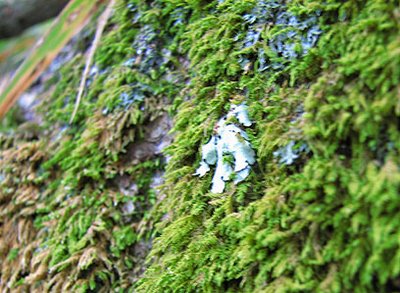Consider the lichen

“Lichens are just about the hardiest visible organisms on Earth, but among the least ambitious. They will grow happily enough in a sunny churchyard, but they particularly thrive in environments where no other organism would go – on blowy mountaintops and arctic wastes, wherever there is little but rock and rain and cold, and almost no competition. In areas of Antarctica where virtually nothing else will grow, you can find vast expanses of lichen-four hundred types of them-adhering devotedly to every wind-whipped rock.”
Bill Bryson, A Short History of Nearly Everything, p. 335.
There are more than 20,000 species of lichens. People use to think they were stones turning into plants, or as Dr. Homschuch noted in 1819, “Spontaneously, inorganic stone becomes living plant!”
In reality, lichens are a symbiotic relationship between fungi and algae. Fungi acids dissolve rock and free minerals - the algae convert the minerals into food that sustains both. Beatrix Potter, a naturalist and author of the Peter Rabbit children’s books, first proposed this symbiotic relationship.


0 Comments:
Post a Comment
<< Home